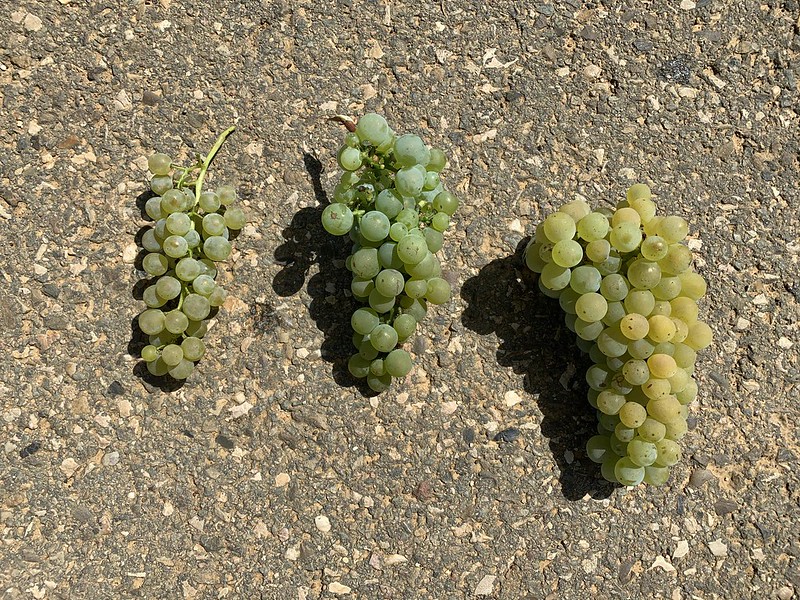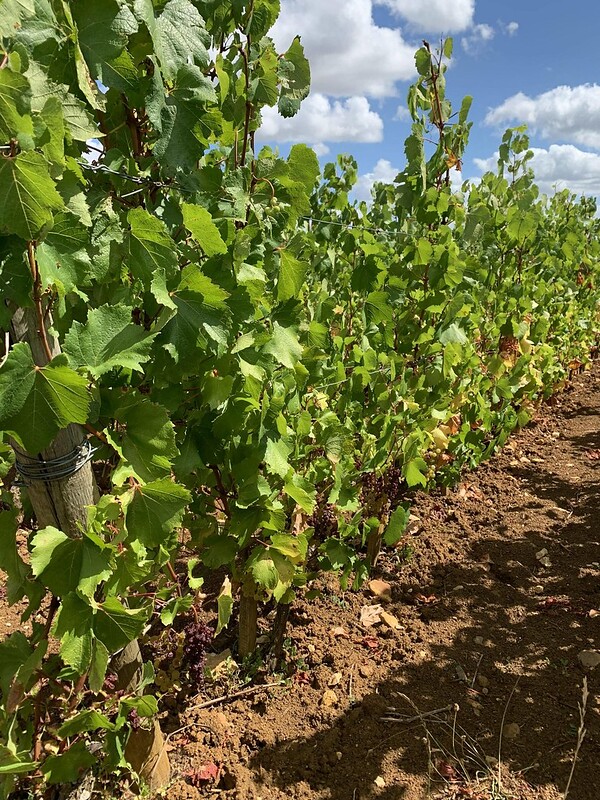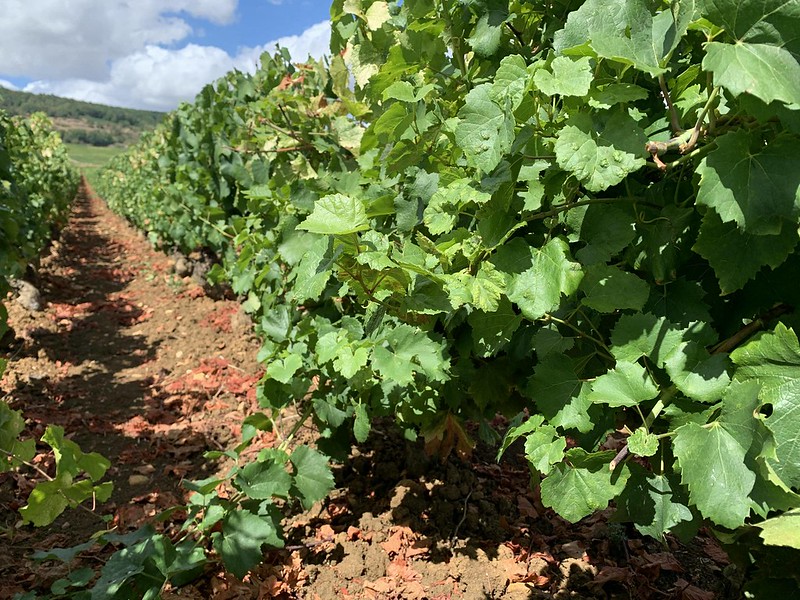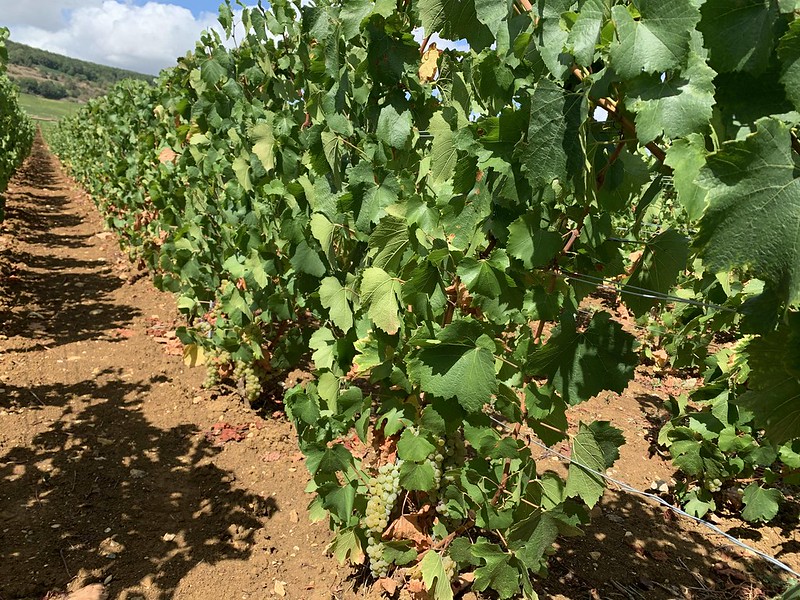Having posted a little bit about viticulture in Burgundy and its impact on wine quality, I thought it might be interesting to share some pictures from Chassagne-Montrachet today. Here are three clusters of grapes, from three contiguous parcels of vines: they share the same geology, soil hydrology, exposition etc.

Three clusters in Chassagne-Montrachet by WilliamGFKelley, on Flickr
From left to right, the first is a a low yielding selection of Chardonnay with small, open clusters, farmed with high canopies: the grapes are characterized by high levels of dry extract, and are already fully mature at >13% potential alcohol. This year, the parcel has suffered with sunburn, like many along the Côte, but the grapes that have been spared are tasting great, with ripe skins and seeds. From a potential yield of around 45 hl/ha, sunburn has reduced the crop to around 30-35 hl/ha. Here are the vines in question (note that the photo probably doesn’t convey quite how high the canopies are):

Cluster 1 vines by WilliamGFKelley, on Flickr
In the middle is a higher yielding selection, heavily fertilized, that has been trimmed short: this has prompted lateral growth and vegetative vigor. Potential alcohol here is barely at 10%, and the fruit tastes notably herbaceous. The yields are high, but almost entirely hidden behind the profusion of leaves:

Cluster 2 vines by WilliamGFKelley, on Flickr
On the right is a higher yielding selection (young vines, too), but with a better balanced canopy. The skins-to-juice ratio is evidently considerably lower than the cluster on the left, and the wines that result will be softer, rounder, and more open-knit: especially if they see are short, gentle pressing. In 30 years, of course, with diminished vigor, they may deliver excellent results… Potential alcohols here must be around 11+%

Cluster 3 vines by WilliamGFKelley, on Flickr
To me, this emphasizes what a pity it is that viticultural differences are largely subordinate to “terroir” in discussions of Burgundy’s wines. It’s also evident that it’s entirely fatuous to judge producers based on when they harvested: cluster number one was being picked today, number two might need to wait until September (even if it’s unlike its owners will), and number three will be ready around Wednesday this week. This is why I never even ask producers when they picked when I am reviewing their wines…
